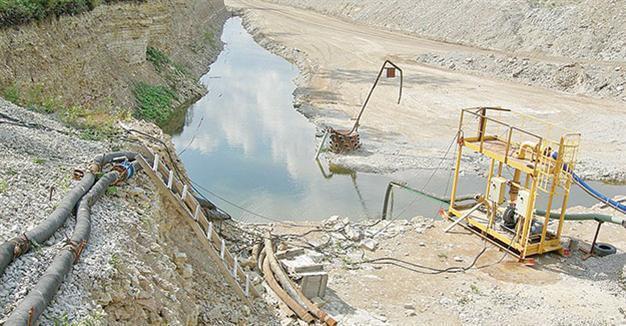Estonia an example of effective shale use
Jyri Kann and Anto Raukas Talinn University of Technology

There is no other country in the world that can cover almost 80 percent of its electric power needs with oil shale. Sustainable exploitation of oil shale in Estonia must be based on reforms of infrastucture and institutions, which should include technical, administrative, economic and environmental measures. New technologies with higher thermal efficiencies produce much less atmospheric emissions and wastes. All environmental parameters are now in harmony with the requirements of EU directives.
Oil shale mining is accompanied by the lowering of the water level and discharge of mine water into bodies of surface water. Mining activities have a direct influence on groundwater quality due to the use of machinery, blasting, fuel and oil residues, etc.
Oil shale mining causes a large number of technical, economic, geological, ecological and legal problems. The power stations using oil shale emit large amounts of carbon dioxide and other greenhouse gases; the groundwater regime, landscapes and also the water quality are altered in mined-out areas.
But achievements of the last years showed that the negative aspects of oil shale energy could be most significantly reduced and local people are not against the mining and reworking of the oil shale. After the installation of units with new boilers in Narva Plants, the emission of carbon dioxide, nitrogen oxides and sulphur dioxides has fallen substantially and Estonian technological recommendations can be sucessfully used in other oil shale countries.
Nevertheless, Estonia is an advanced country in using renewable energy. In 2014 from all electricity consumption the role of renewable sources was 14.8 percent. Our task is to use all resources in optimal way. One is clear – more different producers in the market give the opportunity to receive lower-price electricity.
 There is no other country in the world that can cover almost 80 percent of its electric power needs with oil shale. Sustainable exploitation of oil shale in Estonia must be based on reforms of infrastucture and institutions, which should include technical, administrative, economic and environmental measures. New technologies with higher thermal efficiencies produce much less atmospheric emissions and wastes. All environmental parameters are now in harmony with the requirements of EU directives.
There is no other country in the world that can cover almost 80 percent of its electric power needs with oil shale. Sustainable exploitation of oil shale in Estonia must be based on reforms of infrastucture and institutions, which should include technical, administrative, economic and environmental measures. New technologies with higher thermal efficiencies produce much less atmospheric emissions and wastes. All environmental parameters are now in harmony with the requirements of EU directives.